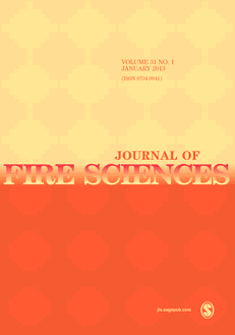
JOURNAL OF FIRE SCIENCES
Scope & Guideline
Exploring the science behind fire and safety.
Introduction
Aims and Scopes
- Fire Dynamics and Behavior:
Research in this area examines the fundamental principles of fire behavior, including flame spread, heat transfer, and the interaction of fire with various materials and environments. - Fire Safety Engineering:
This scope encompasses the design and evaluation of fire safety measures, including the development of standards and regulations to enhance safety in various settings such as buildings, transportation, and industrial facilities. - Materials and Fire Retardancy:
Investigations focus on the properties of materials in relation to fire, including the development of fire-retardant materials and the analysis of their performance under various conditions. - Fire Suppression Techniques:
Research includes experimental studies and modeling of various fire suppression methods, ranging from traditional extinguishing agents to novel approaches such as nanomaterials and environmentally friendly alternatives. - Fire Risk Assessment and Management:
This area emphasizes methodologies for assessing fire risks in different environments, including probabilistic analyses and the evaluation of fire protection systems. - Thermal Analysis and Modeling:
This scope involves the use of computational and experimental methods to model thermal behavior in fire scenarios, aiding in the understanding of fire dynamics and improving safety measures.
Trending and Emerging
- Innovative Fire Suppression Materials:
Recent publications highlight the exploration of advanced materials, such as nanomaterials and biodegradable flame retardants, showcasing a growing trend towards sustainable and effective fire suppression solutions. - Computational Modeling and Simulations:
There is an increasing emphasis on computational methods, including CFD (Computational Fluid Dynamics) modeling, to predict fire behavior and assess fire safety measures in complex environments. - Fire Safety in Emerging Technologies:
Research is increasingly addressing fire safety concerns associated with new technologies, such as electric vehicles and smart materials, reflecting the need for updated safety protocols in the face of innovation. - Interdisciplinary Approaches to Fire Safety:
The journal is embracing interdisciplinary research that combines insights from various fields, such as materials science, engineering, and environmental science, to enhance fire safety methodologies. - Fire Risk and Vulnerability Assessments:
A growing focus on probabilistic risk assessment methods indicates a trend towards more sophisticated evaluations of fire risk in diverse settings, aiming to improve fire prevention strategies.
Declining or Waning
- Traditional Firefighting Techniques:
Papers focusing on conventional firefighting methods and equipment are becoming less frequent, possibly due to the increasing emphasis on advanced technologies and innovative suppression techniques. - General Fire Safety Regulations:
Research devoted solely to existing fire safety regulations without proposing significant changes or advancements is waning, as the journal increasingly prioritizes studies that offer novel insights or improvements. - Basic Fire Science Principles:
While foundational knowledge remains important, there seems to be a decline in publications that cover basic principles of fire science, as the journal shifts towards more complex applications and interdisciplinary studies. - Historical Fire Analysis:
Papers that primarily review historical fire events without a contemporary application or relevance are appearing less frequently, indicating a trend towards research that can directly inform current practices. - Non-Experimental Studies:
There is a noticeable decrease in purely theoretical or non-experimental studies, with the journal favoring empirical research that provides actionable insights into fire safety and behavior.
Similar Journals
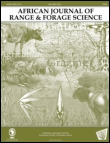
AFRICAN JOURNAL OF RANGE & FORAGE SCIENCE
Exploring Sustainable Solutions for African Forage ManagementAFRICAN JOURNAL OF RANGE & FORAGE SCIENCE is a premier scholarly publication dedicated to the fields of animal science, zoology, and ecology, published by TAYLOR & FRANCIS LTD. With a notable impact factor and categorized in the Q2 quartile for both Animal Science and Ecology, this journal is essential for disseminating cutting-edge research that addresses the complexities of forage management and its ecological implications across the African continent. Established in 1993 and continuing to engage with the latest advancements through to 2024, it serves as a vital platform for researchers, practitioners, and students to share innovative findings and practical applications. The journal not only fosters collaboration among scientists but also emphasizes the importance of sustainable practices in range management, providing insights that have broader implications for environmental conservation. Although it is not currently open access, the journal remains a respected entity in academic circles, with Scopus rankings reflecting its significant contribution to the scientific community. Readers are encouraged to explore its rich repository of research to inform and inspire future studies in these crucial areas.

Advanced Industrial and Engineering Polymer Research
Unlocking the Future of Polymer EngineeringAdvanced Industrial and Engineering Polymer Research (ISSN: 2542-5048), published by KEAI PUBLISHING LTD, stands as a pivotal Open Access journal dedicated to the cutting-edge advancements within the fields of materials science and polymer engineering. Established in 2018, this journal aims to foster innovation and disseminate high-quality research that spans the realms of chemical engineering, industrial and manufacturing processes, and polymer applications. With impressive category quartile rankings in Q1 across various disciplines—including Chemical Engineering, Industrial and Manufacturing Engineering, and Materials Science—this journal represents a significant resource for researchers, industry professionals, and students alike. Offering access from its headquarters in Beijing, China, and embracing a commitment to open access since its inception, Advanced Industrial and Engineering Polymer Research ensures that groundbreaking findings are readily available, facilitating collaboration and enhancing knowledge in the global scientific community.

PROCEEDINGS OF THE LINNEAN SOCIETY OF NEW SOUTH WALES
Documenting the Evolution of Natural History ScholarshipPROCEEDINGS OF THE LINNEAN SOCIETY OF NEW SOUTH WALES, ISSN 0370-047X, is a prestigious journal published by the Linnean Society of New South Wales, dedicated to the advancement of knowledge in the fields of natural history, ecology, and biodiversity. Established in the mid-20th century, this journal serves as a vital platform for reporting original research, reviews, and discussions on various aspects of Australian flora and fauna, along with broader contributions to environmental science. Though the journal is not open access, it remains an important resource for researchers, students, and professionals seeking to engage with high-quality studies that inform conservation efforts and ecological understanding in the region. The journal's historical significance is underscored by its coverage of pivotal research from 1980 to 2015, fostering ongoing dialogue within the scientific community and promoting the values of the Linnean Society's commitment to natural history scholarship.
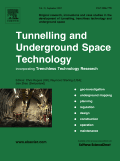
TUNNELLING AND UNDERGROUND SPACE TECHNOLOGY
Transforming Underground Spaces with Cutting-Edge Research.TUNNELLING AND UNDERGROUND SPACE TECHNOLOGY, published by Pergamon-Elsevier Science Ltd, stands at the forefront of research in the fields of tunnelling, underground construction, and geotechnical engineering. With the high reputation reflected in its prestigious Q1 status in both Building and Construction and Geotechnical Engineering and Engineering Geology quartiles, this journal serves as an essential platform for pioneering studies and innovative practices. The journal has demonstrated a notable impact in the academic community, evidenced by its impressive Scopus rankings, with an esteemed rank of #7 in Geotechnical Engineering out of 229 journals, placing it in the 97th percentile. This positions it as a vital resource for researchers and professionals seeking the latest advancements in underground space technology. Published since 1986 and continuing through 2024, the journal aims to disseminate cutting-edge research that enhances both the science and practice of tunnelling, providing a significant repository for students and experts eager to advance their understanding and expertise in this critical area of engineering.

Computers and Concrete
Empowering Research in Computational Mechanics and MaterialsComputers and Concrete is a leading academic journal published by TECHNO-PRESS, focusing on the interdisciplinary field of computational mechanics as applied to civil engineering and concrete materials. With an impressive impact factor consistent with its status in its category, this journal holds a prestigious Q1 ranking in Computational Mechanics for 2023, being recognized as one of the top journals within this domain. Since its inception in 2006, Computers and Concrete has provided a vital platform for researchers and professionals to disseminate innovative findings, fostering collaboration and knowledge exchange among an engaged community. The journal is available in both print and digital formats, ensuring accessibility to a wide audience of academics and practitioners alike. By featuring high-quality research articles, review papers, and technical notes, this journal plays a crucial role in advancing the understanding and application of computational techniques in the field of concrete and structural engineering.

Acta Facultatis Xylologiae Zvolen
Exploring the forefront of forestry science.Acta Facultatis Xylologiae Zvolen, an esteemed journal published by TECHNICKA UNIV ZVOLENE, serves as a pivotal platform for the dissemination of research within the field of Forestry. With an ISSN of 1336-3824, this journal has been consistently delivering scholarly articles since its inception in 2007. It is recognized in Scopus, placing it in the Q3 category among its peers in Agricultural and Biological Sciences, specifically in Forestry, wherein it ranks #80 out of 174 with a 54th percentile. Although currently not open access, it provides critical insights and high-quality research that are invaluable for professionals, researchers, and students engaged in forestry and related disciplines. Readers can expect to find articles that delve into contemporary issues, innovative methods, and emerging trends within the field, making it an essential resource for anyone devoted to advancing the science of forestry.
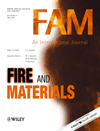
FIRE AND MATERIALS
Pioneering Research at the Intersection of Fire and MaterialsFIRE AND MATERIALS, published by Wiley, is a prestigious journal that provides a vital platform for the dissemination of high-quality research in the fields of materials science and engineering, particularly focusing on the complex interactions between fire and various materials. With an ISSN of 0308-0501 and an E-ISSN of 1099-1018, the journal boasts a commendable impact factor ranking in the top quartiles for multiple categories, including Ceramics and Composites, Chemistry (Miscellaneous), and Electronic, Optical and Magnetic Materials. The journal’s robust Scopus ranks reflect its influence in the materials science community, with a notable position in the 75th percentile for Metals and Alloys. Although Open Access is not an option, the journal ensures wide accessibility and readership within the academic and professional spheres. FIRE AND MATERIALS serves as an essential resource for researchers, professionals, and students interested in the behaviors of materials under thermal stress, contributing significantly to advancements in safety and performance in diverse applications.

ENGINEERING JOURNAL-AMERICAN INSTITUTE OF STEEL CONSTRUCTION
Exploring the Intersection of Design and Engineering Excellence.ENGINEERING JOURNAL-AMERICAN INSTITUTE OF STEEL CONSTRUCTION, published by the American Institute of Steel Construction, stands as a vital resource for researchers, practitioners, and students in the fields of Building and Construction as well as Civil and Structural Engineering. With a history tracing back to its convergence in 1968 and an ongoing commitment to advancing engineering knowledge up to 2024, the journal is indexed under the ISSN 0013-8029. Despite its current open access status, the journal carries significant scholarly weight, reflected in its Q3 ranking in both relevant categories for 2023 and Scopus rankings indicating robust academic relevance within its sectors. The publication aims to disseminate innovative research, practical insights, and critical reviews that contribute to the enhancement of steel construction and infrastructure development. Situated in the heart of Chicago, the journal's dedicated focus on steel's pivotal role in engineering design and application forms an essential part of the conversation around modern building practices and sustainability challenges in the construction industry.

FIRE TECHNOLOGY
Empowering Researchers to Combat Fire RisksFIRE TECHNOLOGY is a prestigious peer-reviewed journal published by SPRINGER, focusing on the integral aspects of fire sciences and engineering. With its longstanding history from 1965 to 2024, the journal aims to advance the understanding of fire phenomena, enhancing safety and risk management practices in both engineering and materials science fields. Serving as an essential resource for researchers, professionals, and students alike, FIRE TECHNOLOGY currently holds a Q2 ranking in both Materials Science (miscellaneous) and Safety, Risk, Reliability, and Quality categories as per the 2023 Category Quartiles report. Additionally, it ranks #36 out of 207 in Safety, Risk, Reliability and Quality within Scopus, emphasizing its significant impact and reach in the scientific community. Although it operates under a traditional access model, FIRE TECHNOLOGY contributes invaluable knowledge that promotes the innovation of safer materials and practices in addressing fire hazards. Its dedicated focus continues to inspire advancements in fire technology and enhance societal safety, making it an indispensable publication for those invested in these critical fields.
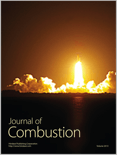
Journal of Combustion
Advancing Knowledge in Combustion TechnologyJournal of Combustion is a premier academic journal dedicated to the field of combustion science and technology, published by HINDAWI LTD. With an ISSN of 2090-1968 and an E-ISSN of 2090-1976, the journal has been an open-access platform since 2008, ensuring that cutting-edge research is accessible to all. Based in the United States at Adam House, 3rd Flr, 1 Fitzroy Sq, London W1T 5HF, England, the journal publishes articles spanning various relevant disciplines, contributing to knowledge in Chemical Engineering, Fuel Technology, and Energy Engineering. As of 2023, it ranks in the Q3 quartile in Chemical Engineering (miscellaneous) and Fuel Technology, and in Q4 in Condensed Matter Physics and Energy Engineering and Power Technology, highlighting its growing impact and relevance in these fields. Researchers will find valuable insights as the journal converges its findings from 2010 to 2024. With a focus on promoting innovative approaches and exploring new frontiers in combustion research, the Journal of Combustion continues to be an essential resource for academics, professionals, and students committed to advancing the understanding and application of combustion processes.